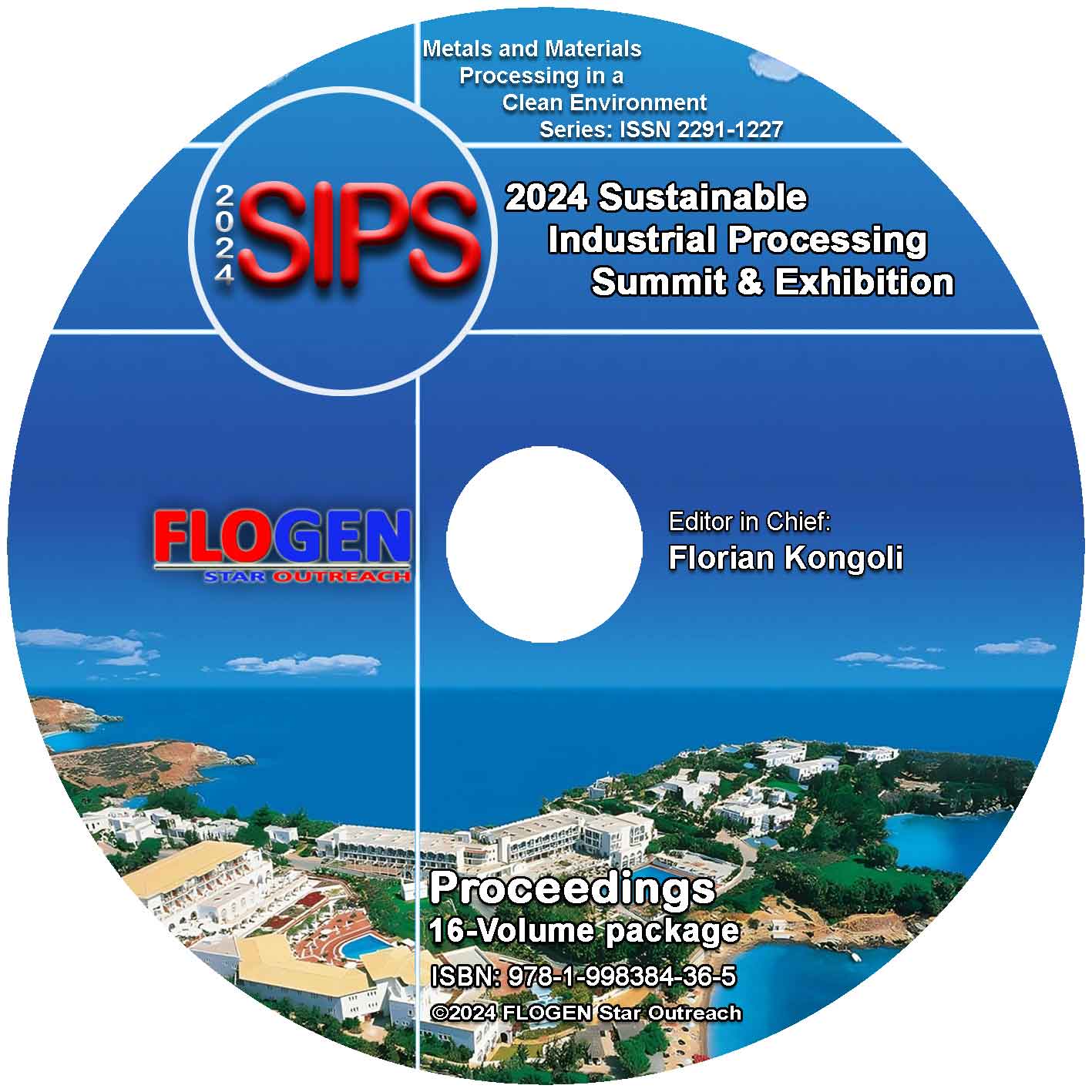2024 - Sustainable Industrial Processing Summit
SIPS 2024 Volume 12. Schultz Intl. Symp / Science of Intelligent & Sustainable Materials / Ferromagnetic & Superconducting Magnets
| Editors: | F. Kongoli, J-M. Dubois, M. Calin, S. Kobe |
| Publisher: | Flogen Star OUTREACH |
| Publication Year: | 2024 |
| Pages: | 236 pages |
| ISBN: | 978-1-998384-26-6 (CD) |
| ISSN: | 2291-1227 (Metals and Materials Processing in a Clean Environment Series) |

CD shopping page
MAGNETIC PROPERTIES AND APPLICATIONS OF GLASS-COATED FERROMAGNETIC MICROWIRES
Valentina Zhukova1; Paula Corte-Leon1; Juan Maria Blanco1; Jesus Olivera2; Arcady Zhukov3;1UNIVERSITY OF THE BASQUE COUNTRY, San Sebastian, Spain; 2UNIVERSIDAD AUTONOMA DE SANTO DOMINGO (UASD), Santo Domingo, Dominican Republic; 3BASQUE FOUNDATION FOR SCIENCE, Bilbao, Spain;
Type of Paper: Invited
Id Paper: 64
Topic: 42
Abstract:
Magnetic wires have attracted considerable attention due to their rather attractive magnetic properties such as giant magneto-impedance (GMI) effect or magnetic bistability, potentially suitable for several prospective applications (magnetic and magnetoelastic sensors, magnetic memory and logic, electronic surveillance, etc.) [1,2]. Glass-coated magnetic microwires prepared using the Taylor-Ulitovsky technique with thin metallic nucleus (typically with diameters 0.1 to 100 μm) covered by flexible, insulating and biocompatible glass are therefore quite interesting for sensor applications [2]. This technique allows preparation of magnetic wires with amorphous or crystalline structure of metallic nucleus. In the case of glass-coated microwires the magnetoelastic anisotropy contribution becomes relevant since the preparation process involves not only the rapid quenching itself, but also simultaneous solidification of the metallic nucleus surrounded by non-magnetic glass-coating with rather different thermal expansion coefficients [3].
The purpose of this paper is present last results on tailoring of soft magnetic properties and GMI effect in glass-coated microwires paying special attention to achievement of high GMI effect and on optimization of domain wall dynamics.
The impact of post-processing on soft magnetic properties and the giant magnetoimpedance (GMI) effect of Fe- and Co-based glass-coated microwires is evaluated. A remarkable improvement of magnetic softness and GMI effect is observed in Fe-rich glass-coated microwires subjected to stress annealing. Annealed and stress-annealed Co-rich microwires present rectangular hysteresis loop and single and fast domain wall propagation. However, Co-based stress-annealed microwires present higher magnetoimpedance ratio. Observed stress-induced anisotropy and related changes of magnetic properties are discussed considering internal stresses relaxation and “back-stresses”. Consequently, stress annealing of ferromagnetic microwires allows achievement of interesting combination of magnetic properties.